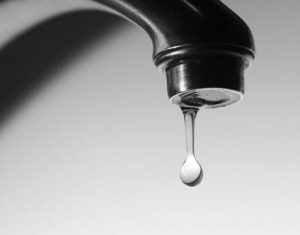
Leaky faucets are a pain, but you don’t have to live with it. You can fix the leak and, in the process, reduce your water bill by up to 10%!
Impact of leaks on water consumption
According to the US Environmental Protection Agency (EPA), a leaky faucet dripping at one drop per second wastes around 3,000 gallons of water in a year – money literally down the drain!

Types and of faucets why they leak
Compression faucets move a stem up and down to vary the gap between a rubber washer and valve seat. A worn washer or corroded valve seat may cause a spout leak. Replacing these solves the problem.
If the handle base leaks, the packing nut is usually to blame (the nut holds packing in place which supports the faucet stem). Start by tightening the nut. If that doesn’t work, replace the packing, nut or both.
Cartridge faucets use a stem cartridge to turn water on and off. They can be single lever type (where the lever is raised and lowered to control flow and rotated to control temperature), or dual lever (where each lever is turned to allow flow of hot and cold water). Cartridge faucets typically leak from the cartridge itself, which must be replaced.
Ball faucets have a single lever controlling a ball at its base. This ball has slots, which work with spring-loaded rubber seals to vary temperature and flow. Many components in a ball faucet can leak. Springs may need replacing, or the O-rings may be worn. You have to take it apart to diagnose the source.
Disc faucets use slots in two ceramic discs that align to mix hot and cold water: one disc is stationary and the other moves up and down and from side to side to control temperature and flow. These discs are enclosed in a cartridge so if it leaks, the cartridge must be replaced.

Tips for prolonging faucet life
Keep components clean to prevent corrosion. Soaking in or cleaning with vinegar is usually the best solution when it comes to descaling faucet components. This involves taking apart your faucet. If you’re doing it yourself, get the manufacturer’s diagrams and instructions if possible to make sure you don’t miss anything when you put it back together.
Don’t close compression faucets too tightly. If a leak starts you might be tempted to postpone repair and close the faucet tighter. This wears down the washer faster and damages the valve seat.
If mineral build-up continues to wear on sealing components, it might be necessary to install a water softener.

Some leaks need a professional hand
Sometimes, the best solution may be to replace the entire faucet. If you’re tired of losing sleep over a leak, give us a call or schedule service online.
(618) 484-9822 | TrustTiger.com
Financing
Options
Winning Team






















